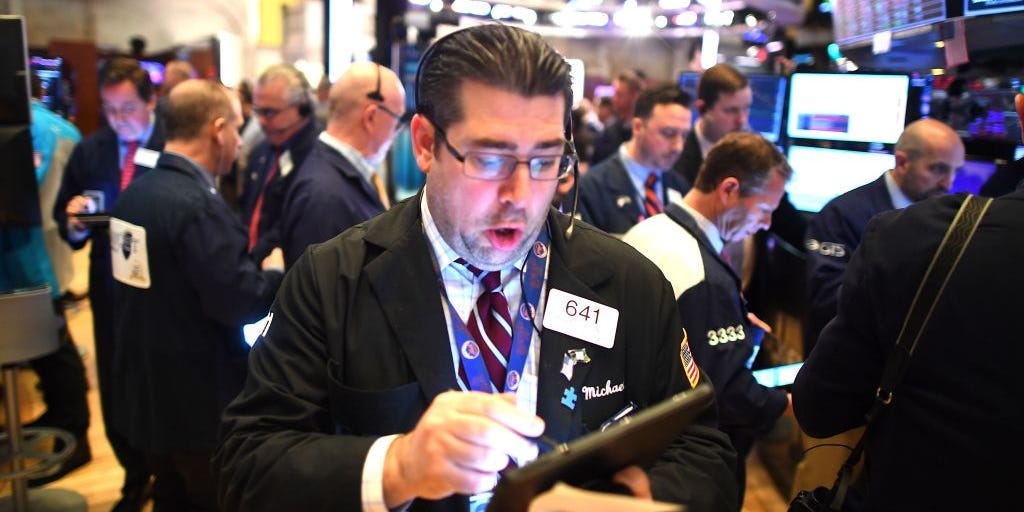
- US stocks edged higher on Friday as investors eyed stabilizing bond yields that spiked earlier on signs inflation remains hot.
- The 10-year Treasury yield eased to 2.003% from 2.036% after rising above 2% for the first time since 2019 on Thursday.
- It has been a volatile trading week as investors balance strong corporate earnings with varying expectations of the Fed tightening monetary policy.
US stocks edged higher on Friday as bond yields pulled back from an earlier spike that was spurred by data showing inflation remains at the highest rate in 40 years.
All indexes pointed higher on the last trading day of the week after steep losses in the previous session.
Here's where US indexes stood shortly after the 9:30 a.m. ET open on Friday:
- S&P 500: 4,514.15, up 0.22%
- Dow Jones Industrial Average: 35,288.98, up 0.13% (47.39 points)
- Nasdaq Composite: 14,228.40, up 0.30%
The 10-year Treasury yield slid to 2.003% from 2.036% earlier on Friday. On Thursday, it rose above 2% for the first time since 2019. Bond yields move inversely to prices. The two-year yield retreated to 1.557% from 1.629%.
US equities have had a volatile trading week as investors balanced strong corporate earnings with varying expectations of the Federal Reserve tightening monetary policy, especially after the Consumer Price Index rose 7.5% in the year through January, marking the biggest rise since 1982.
The surprise acceleration in inflation fueled expectations that the Fed will hike interest rates more aggressively this year, starting with the next FOMC meeting on March 15 and 16.
But Richard Saperstein, CIO of Treasury Partners, does not expect the Fed to announce rate hikes at every meeting even with elevated levels of inflation.
"Such extreme tightening scenarios suggest that we're currently witnessing peak Fed mania," he said in a note Friday. "We expect a moderate tightening process through a combination of rate hikes and the implementation of quantitative tightening starting this summer."
Investors may also look for clues in the minutes from the January Fed meeting. Those will come out February 17. But Ethan S. Harris, Bank of America's global economist, said the data might be outdated.
"In light of recent inflation and labor market surprises, as well as recent Fed speak, we expect this conversation will be stale with members generally debating between 3 to 5 rate hikes this year but general agreement that each hike would be 25 basis points," he said in a note Friday. "That said, significant uncertainty in the outlook would mean that the Fed would keep all options on the table."
Meanwhile, news on the earnings front remains positive. Of the 347 companies in the S&P 500 that have reported so far, 81% beat profit estimates, with overall earnings beating by a median of 6%, data from Fundstrat Global show. On the top line, 75% topped estimates with overall revenue beating by a median of 5%.
Oil prices rallied after the International Energy Agency raised forecasts for demand this year and confirmed that OPEC+ missed its output targets again in January and by an even wider margin of 900,000 barrels, according to Craig Erlam, senior market analyst at Oanda.
West Texas Intermediate crude oil rose as much as 1.18% to $90.94 per barrel. Brent crude, oil's international benchmark, fell as much as 0.95% to $92.28 per barrel.
Gold fell as much as 1.15% to $1,828.73 per ounce.
